Something has happened since I posted at new year. It’s pretty big. When she heard, my friend Jo said: you don’t suppose this is about the car, do you? Surely not, I replied. That would be vindictive. More about that later. First, a bit of backstory about the (seemingly) small issue of Dylan’s car.
Breakdown
 In my last post I mentioned that Dylan and I took the train for our new year trip as I was nervous about using my car, which had failed to start twice. Although I sorted my Skoda out, it was a wake-up call.
In my last post I mentioned that Dylan and I took the train for our new year trip as I was nervous about using my car, which had failed to start twice. Although I sorted my Skoda out, it was a wake-up call.
Some years ago, I realised the car I drive needs to be as reliable as possible so as to limit the chance of breaking down while transporting Dylan. Supporting Dylan at weekends typically involves 150 miles of driving and holidays significantly more. My local garage and mechanic have looked after us well, sourcing low mileage, ex-Motability cars, just out of warranty, as soon as my milometer hits the 50k mark (which experience has taught me is when things start to go wrong). My Skoda’s recent protests happened right on cue, in the high 40,000s.
This time, however, I’m in no position to replace it. While there are many benefits to being partially retired, money isn’t one of them. There’s no capacity in my current circumstances for trading in my car to meet Dylan’s needs. And changing the Skoda would be for Dylan not me: while I don’t relish the thought of breaking down, I’d run the risk if it was just me. This was a financial consideration I hadn’t considered when I gave up working full-time. What do other families of disabled adults do, I wondered?
Motability
And then of course I realised – the mobility component of a disabled person’s Personal Independence Payment (PIP) can be used for the hire cost of a Motability car. Not everyone who gets PIP qualifies for the mobility allowance, but Dylan has always received it. I’ve never previously applied for a Motability car as Dylan was either living at home (where two cars seemed pointless) or in a care setting with ‘pool cars’. Instead of spending Dylan’s benefit money on a Motability car, I used it to support his trips.
Now, however, the scheme appeared to offer an elegant solution. Dylan could keep a Motability car at the care home, and I would only need to use my car to drive there and back, leaving my car at the care home while Dylan and I used the Motability car. That would ensure Dylan was transported safely and reduce the wear and tear on my Skoda.
Getting a Motability car would also be a happy solution to a problem I’d only recently identified. Last October, when I asked the care home manager why Dylan seemed to be getting only limited exercise during the week, I was told there were times when a pool car wasn’t available. As there were only a limited number of cars to share between residents, if Dylan missed his scheduled slot, his outing had to be cancelled. So, two problems solved.
Nissan Joke
 When I entered my search criteria on the Motability site it suggested a Nissan Juke. This made me smile. I’d had to hire cars for trips with Dylan for a while the last time I changed my car. I’d cursed the Juke I drove one weekend for its blind spot. Nissan Joke, I called it.
When I entered my search criteria on the Motability site it suggested a Nissan Juke. This made me smile. I’d had to hire cars for trips with Dylan for a while the last time I changed my car. I’d cursed the Juke I drove one weekend for its blind spot. Nissan Joke, I called it.
The algorithms were having a laugh. It was probably because I’d selected CD player, I decided. Old technology, my car salesman told me when I asked why my new Skoda didn’t have one. But old technology is essential for Dylan who needs to choose CDs and DVDs by the picture on the box. Streaming doesn’t work for him. The jewel case is part of the pleasure. Dylan opens it slowly and carefully, pausing to admire the glint of the disc.
I curse the lack of a CD player in my current car regularly. I’ve bought an Oakbrook AUX plug-in, but it eats batteries and (contrary to promises) jumps constantly. And I can’t adjust it while I’m driving: no skipping the tracks that hurt Dylan’s ears or changing a CD without stopping. I’m sorry, Dylan, I say repeatedly. Rubbish isn’t it. I promise that next time mummy will get a car with a CD player. But would I really choose a Nissan Joke for a CD player?
Test Drive
Only in the old models, Peter says, when I ask where the CD player is. 8th January. I’m sitting in a blue Nissan Juke on the forecourt of Bristol Street Motors, scanning the controls. I get in the back, try to assess whether Dylan would be safe. I climb back in the driver’s seat. That’s not very good, I say. No CD player is probably a deal breaker. You won’t find any new car with one, Peter tells me. Old technology. May as well drive it, I say. As I’m here.
I can’t have been the only person who was troubled by that blind spot. The car has a ‘blind spot warning system’ which pings when someone drives into it. I don’t know what’s worse, I say to Peter, as I accelerate up one of Sheffield’s wicked hills: the pinging or the blind spot. You can disable it if it annoys you, he reassures me.
Could I have one with a handbrake, I ask, when we’re back at the showroom. I need the controls to be as simple as possible. Some of the care workers are young. They won’t have driven anything like this. I don’t want them to be thinking about the car. They need to stay focused on my son. Sure, Peter says. We can request adaptations. Anything you want. Except for a CD player. It’s disappointing, I say. But I guess it’s OK. I just need to check with the care home. I’ll ring to confirm. I’m sure it will be fine.
Seven Seats
 But when I checked with the manager, there was a problem. It would need to be a 7-seater vehicle. Next time I collected Dylan, I might want to have a look at one in the car park that belongs to another resident. Something like that would be good please. I didn’t understand. Why, I asked. Dylan requires an empty row to be left between him and the driver, she explained. We usually transport him in the back of a people carrier.
But when I checked with the manager, there was a problem. It would need to be a 7-seater vehicle. Next time I collected Dylan, I might want to have a look at one in the car park that belongs to another resident. Something like that would be good please. I didn’t understand. Why, I asked. Dylan requires an empty row to be left between him and the driver, she explained. We usually transport him in the back of a people carrier.
I was aghast. This was a conversation with too many starting points. In no particular order, I didn’t want to be driving a people carrier on single track roads in Wales or parking one on my busy city street. And I certainly didn’t want to have to fill one up with petrol from Dylan’s much reduced weekly benefit. Dylan was only ever transported with one or two other adults – how could a 7-seater car be justified? Had the manager not heard of climate change?
Besides (and actually this is the starting point) it just wasn’t right. Dylan loves driving. With hardly any multi-syllable words, Dylan pronouncing ‘gearstick’ with a flourish (laughing) is one of my miracles. Cars are for feeling safe and for the gift of language. This is where Dylan initiates conversation, shouting ‘cows’ or ‘sheep’ at passing fields; telling me ‘at way’ (pointing with his arm) is ‘boom’ (Kelham Island Museum); ‘at way’ is ‘F’man Sam’ (the Emergency Services Museum); and ’at way’ is ‘Log’ (where he went for respite as a child). He verbalises (as best he can) swimming pool, MacDonalds, tram, water, and cafe. He reminds me, as we pass Record Collector, that we don’t have ‘Heap’ (Speak for Yourself). But Oxfam has ‘books’ and ‘DDs’. This is car-based communication through which Dylan shares his world. It is declarative and imperative. This is as good as conversation with Dylan gets.
Let me get this right, I say. You’re telling me that Dylan is usually transported in the back of a people carrier, separated from his support workers? Always, the manager confirms. At least a row of seats between. It’s in his risk assessment, she explains, due to some incidents.
Incarceration
When I asked for the evidence, it appeared there had been 13 ‘incidents’ in the nine years that Dylan had lived at the setting. I don’t mean to trivialise the data. You can’t afford to take a single risk with transportation I know. Except that when I looked at the incidents, they weren’t about the car. The car was the site of protest at the end of an unsatisfactory trip. They were protests about an activity coming to an end before Dylan was ready. An unexpected transition. A takeaway meal he was disappointed with. Perhaps (I speculated) music on the radio that distressed him, a misunderstood attempt at communication or (it occurred to me with a feeling of sadness) him simply feeling isolated and alone.
They’re using it as a prison van, mum, my daughter observed. It’s about containment. Transporting Dylan as if he’s dangerous. Stick him in the back. Shut the door. They need the people carrier to lock Dylan down when he protests. He’s not compliant enough for them. You should be proud of him, mum.
Next day, I emailed the manager that I wouldn’t be getting a people carrier. Dylan didn’t need one. I would order a Nissan Juke – significantly chunkier than my Skoda and hopefully a good compromise. She replied that Dylan wouldn’t be able to use it while he was with them. Staff would not feel comfortable driving it. Could she be serious, I asked Jo, who has experience of the sector. Probably, she replied. Everything is driven by risk assessment. This is one argument you’re probably not going to win.
Independence
 I decided to go ahead. I would have preferred to act in partnership with the care home, but couldn’t find common ground with this one. It was a shame the car would stand idle during the week, but I’d probably be driving it more than them, based on Dylan’s short trips out during the week. If the car didn’t get used enough, it could go back at the end of the hire agreement. Or when I could afford to replace my Skoda. So for the first time since Dylan moved to residential care, I acted independently. Good for you, mum, my daughter said. Ironically, I replied, it’s Dylan’s independence it was supposed to promote, not mine.
I decided to go ahead. I would have preferred to act in partnership with the care home, but couldn’t find common ground with this one. It was a shame the car would stand idle during the week, but I’d probably be driving it more than them, based on Dylan’s short trips out during the week. If the car didn’t get used enough, it could go back at the end of the hire agreement. Or when I could afford to replace my Skoda. So for the first time since Dylan moved to residential care, I acted independently. Good for you, mum, my daughter said. Ironically, I replied, it’s Dylan’s independence it was supposed to promote, not mine.
Breakdown
Two weeks after the manager tried to persuade me to get a people carrier, the National Autistic Society held a meeting at which it was agreed to terminate Dylan’s placement, with three-month’s notice. I didn’t know about the meeting, and I wasn’t told about the eviction until two weeks after the decision had been made.
‘You don’t suppose this is about the car, do you?’ Jo asked when I told her. We couldn’t imagine why the manager would have tried to influence the choice of car if she was about to terminate Dylan’s placement. But neither did we think the car was what this was about. Surely not. That would be vindictive.
Blue Lining
 I took delivery of Dylan’s Juke a couple of weeks ago, a bright blue moment in the midst of a stressful time (though not for Dylan, who isn’t aware of any of this). Nissan hadn’t fitted a mechanical handbrake as requested. Don’t worry, I told Peter. It will be fine. The situation is a little different to when I ordered it. I don’t suppose by some miracle it has a CD player, I asked. Peter laughed. Only joking, I said. I’ve bought a CD player that runs off the car battery. Dylan should be able to operate it from the back. It will give him some independence. He’s going to love that.
I took delivery of Dylan’s Juke a couple of weeks ago, a bright blue moment in the midst of a stressful time (though not for Dylan, who isn’t aware of any of this). Nissan hadn’t fitted a mechanical handbrake as requested. Don’t worry, I told Peter. It will be fine. The situation is a little different to when I ordered it. I don’t suppose by some miracle it has a CD player, I asked. Peter laughed. Only joking, I said. I’ve bought a CD player that runs off the car battery. Dylan should be able to operate it from the back. It will give him some independence. He’s going to love that.
While we haven’t yet reached the silver lining of eviction (more about that in later posts) we have a sparkly blue lining. Dylan seems comfortable in his new car and to enjoy being in charge of the music. He’s developed an unexpected interest in the Sat Nav and – also against expectation – a couple of staff have taken Dylan for a spin in his new car: ‘he sat lovely throughout the journey’, one of them told me. ‘I actually liked him sat closer, its easier for us to have a natter.’
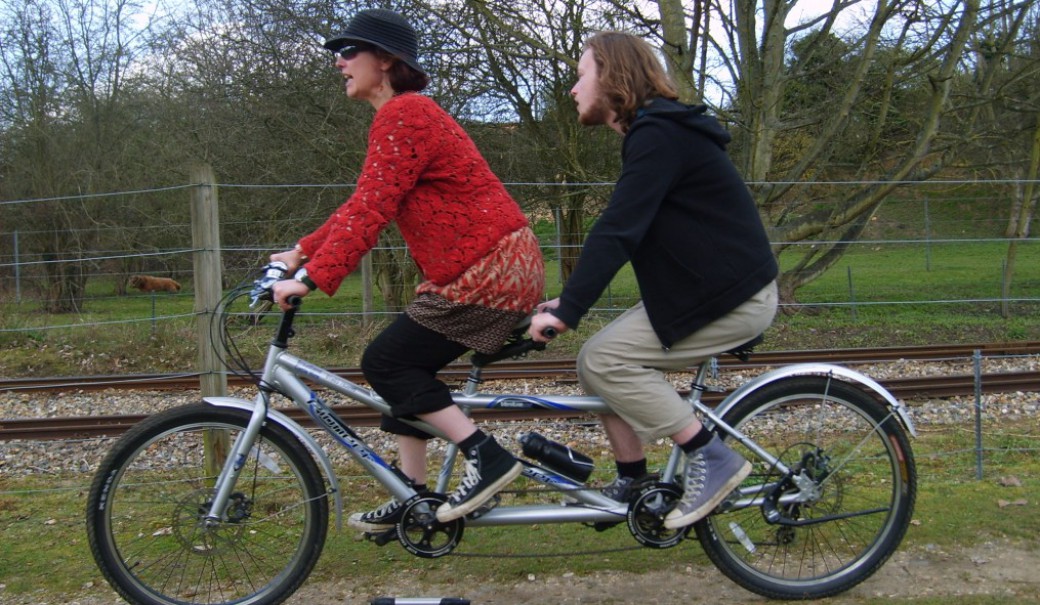

 On the run up to Christmas, Dylan started collecting leaflets for ‘Christmas at Chatsworth’. Dylan makes piles of leaflets to show us what he’d like to do. They’re his way of putting in a request. It took me a while to realise this is why Dylan picks up leaflets when we’re out and about, but once I did it made good sense. Now, Dylan has his own leaflet rack in his apartment, where he can sort and store flyers and brochures.
On the run up to Christmas, Dylan started collecting leaflets for ‘Christmas at Chatsworth’. Dylan makes piles of leaflets to show us what he’d like to do. They’re his way of putting in a request. It took me a while to realise this is why Dylan picks up leaflets when we’re out and about, but once I did it made good sense. Now, Dylan has his own leaflet rack in his apartment, where he can sort and store flyers and brochures. A change of email address meant I didn’t get the usual notification for Disney on Ice and by the time I’d realised there were few options left. The idea that Dylan wouldn’t go was unthinkable: all year, driving past the Sheffield Arena, he reminds me. I spent a frantic hour on the website. There were a few likely seats, but I couldn’t see a way of booking Disabled and Carer, as I usually do. Why is it that these are so often not selectable online? I decided it was more important that I snapped those tickets up while I could. If I kept fiddling with the website, trying to find accessibility options, I risked losing them.
A change of email address meant I didn’t get the usual notification for Disney on Ice and by the time I’d realised there were few options left. The idea that Dylan wouldn’t go was unthinkable: all year, driving past the Sheffield Arena, he reminds me. I spent a frantic hour on the website. There were a few likely seats, but I couldn’t see a way of booking Disabled and Carer, as I usually do. Why is it that these are so often not selectable online? I decided it was more important that I snapped those tickets up while I could. If I kept fiddling with the website, trying to find accessibility options, I risked losing them.  Over-preparing may have its shortcomings but so does under-preparing. I accused myself of this on the platform at Sheffield station, waiting for a train to Birmingham, Dylan flapping with excitement on my arm. I had only just noticed that our tickets didn’t include reserved seats. I’d been so keen to save money I’d selected an offer which left seats open. Friday, late afternoon, on the most popular office party day of the year. How foolish of me.
Over-preparing may have its shortcomings but so does under-preparing. I accused myself of this on the platform at Sheffield station, waiting for a train to Birmingham, Dylan flapping with excitement on my arm. I had only just noticed that our tickets didn’t include reserved seats. I’d been so keen to save money I’d selected an offer which left seats open. Friday, late afternoon, on the most popular office party day of the year. How foolish of me.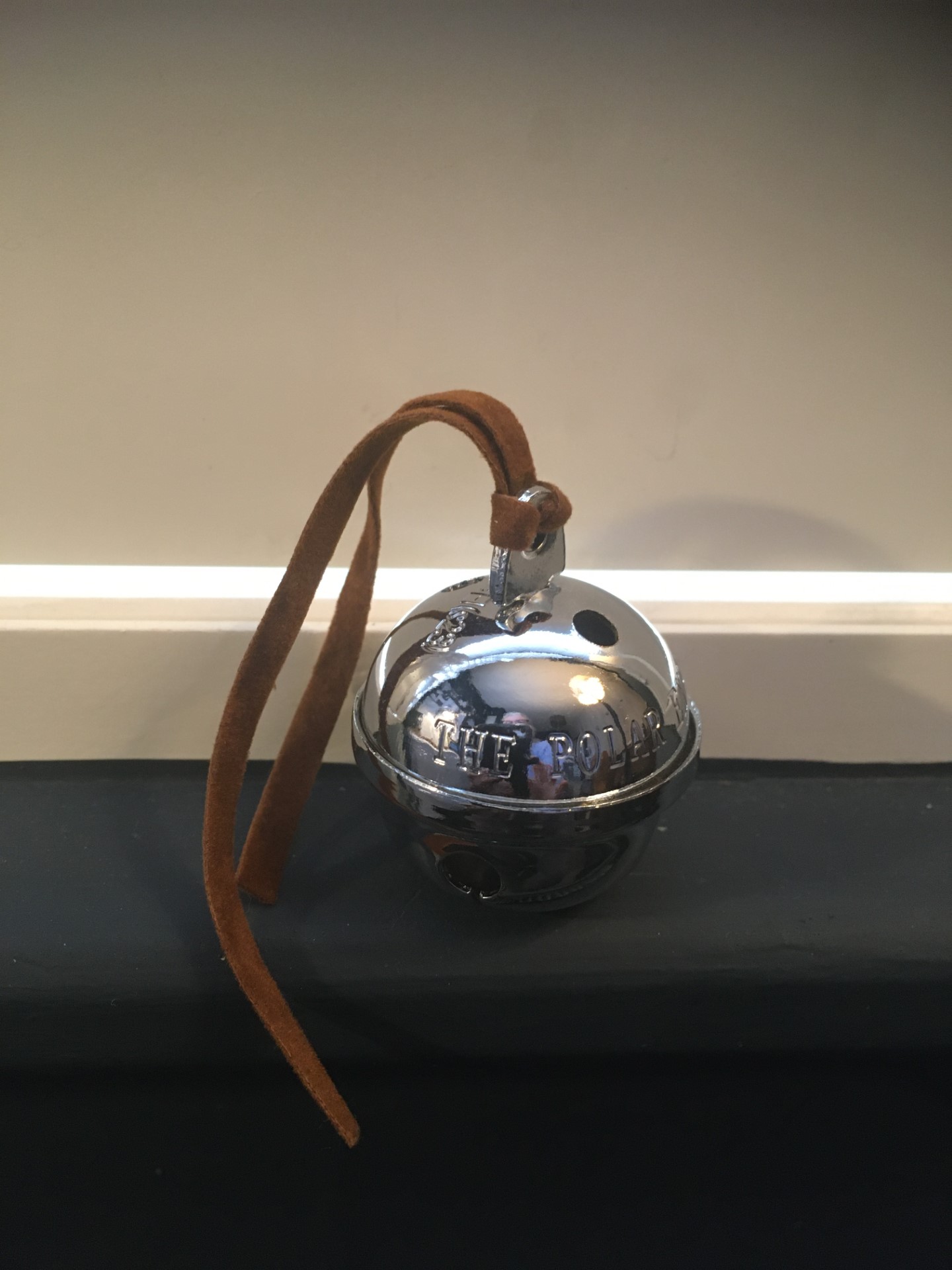 I was wrong not to believe. The truth is British people are lovely. I’m sure people are lovely everywhere but let me celebrate the British public on the train that day, and particularly the woman in the powder blue coat who swapped her seat to make space for us. Also, the couple on the even-more-packed Birmingham to Sheffield train the next day who let us have their seats because they were ‘only going as far as Derby’. Blessings on you lovely people. And let me never forget that nine times out of ten, when I’m out and about with Dylan, members of the public are understanding, helpful and kind.
I was wrong not to believe. The truth is British people are lovely. I’m sure people are lovely everywhere but let me celebrate the British public on the train that day, and particularly the woman in the powder blue coat who swapped her seat to make space for us. Also, the couple on the even-more-packed Birmingham to Sheffield train the next day who let us have their seats because they were ‘only going as far as Derby’. Blessings on you lovely people. And let me never forget that nine times out of ten, when I’m out and about with Dylan, members of the public are understanding, helpful and kind. Between Christmas and New Year my car let me down twice. I had to wait two hours for recovery from the short stay car park at the railway station where I’d gone to say goodbye to my daughter, returning to London. Freezing. Hungry. No money. Miserable. At least I didn’t have Dylan with me, I told myself. A couple of days later, when I left my friend’s almost new year party, my car wouldn’t start again. I abandoned it and got a cab. At least I wasn’t with Dylan, I told myself.
Between Christmas and New Year my car let me down twice. I had to wait two hours for recovery from the short stay car park at the railway station where I’d gone to say goodbye to my daughter, returning to London. Freezing. Hungry. No money. Miserable. At least I didn’t have Dylan with me, I told myself. A couple of days later, when I left my friend’s almost new year party, my car wouldn’t start again. I abandoned it and got a cab. At least I wasn’t with Dylan, I told myself.  Last weekend, we were battered by Storm Babet. My city sits within a basin of five rivers inside a circle of seven hills. In the southeast, the Don burst its banks and flooded Catcliffe. In the southwest, the Porter plunged my local park underwater and turned my cellar floor black. I climbed up and down the steps to my basement, checking for damp.
Last weekend, we were battered by Storm Babet. My city sits within a basin of five rivers inside a circle of seven hills. In the southeast, the Don burst its banks and flooded Catcliffe. In the southwest, the Porter plunged my local park underwater and turned my cellar floor black. I climbed up and down the steps to my basement, checking for damp.  Up on Strines moor, in the Dark Peak, I drive slowly across the streams and waterfalls fording the tarmac. Storm water is a force from the hills, tumbling through woodland and between the crevices of drystone walls, gushing across fields and over roads, down into the valley below. The reservoirs are brimming tears today, but the rain has stopped. The sky is brightening. ‘Splash’ says Dylan as I drive down the centre of the road, water spraying around the car.
Up on Strines moor, in the Dark Peak, I drive slowly across the streams and waterfalls fording the tarmac. Storm water is a force from the hills, tumbling through woodland and between the crevices of drystone walls, gushing across fields and over roads, down into the valley below. The reservoirs are brimming tears today, but the rain has stopped. The sky is brightening. ‘Splash’ says Dylan as I drive down the centre of the road, water spraying around the car. Not everyone is so understanding. Recently, I had an email from the care home to say there’d been an incident. Dylan had tried to bite one of his carers while on a trip to the Yorkshire Sculpture Park. I read the email a few times before it made any sense. The park is Dylan’s favourite place in the world. He has been going there since he was a baby. He held his 21st Birthday Party there. It’s where he goes to celebrate and rejoice. There shouldn’t be any problem taking Dylan there, providing staff stick to the drill. This, of course, means allowing Dylan the time he needs at the weir.
Not everyone is so understanding. Recently, I had an email from the care home to say there’d been an incident. Dylan had tried to bite one of his carers while on a trip to the Yorkshire Sculpture Park. I read the email a few times before it made any sense. The park is Dylan’s favourite place in the world. He has been going there since he was a baby. He held his 21st Birthday Party there. It’s where he goes to celebrate and rejoice. There shouldn’t be any problem taking Dylan there, providing staff stick to the drill. This, of course, means allowing Dylan the time he needs at the weir.  Recently, I came across a reference to ‘Blue Mind’, a phenomenon first recognised and named by Wallace J. Nichols in 2014. Martinez (2022) describes Blue Mind as a mildly meditative state. ‘Water in the ocean, rivers, lakes and even baths’, she explains, ‘can make us feel calmer, increase well-being and boost creativity.’ Could Blue Mind Theory explain Dylan’s relationship with water? I read on with interest.
Recently, I came across a reference to ‘Blue Mind’, a phenomenon first recognised and named by Wallace J. Nichols in 2014. Martinez (2022) describes Blue Mind as a mildly meditative state. ‘Water in the ocean, rivers, lakes and even baths’, she explains, ‘can make us feel calmer, increase well-being and boost creativity.’ Could Blue Mind Theory explain Dylan’s relationship with water? I read on with interest.  ‘Could you remind staff to offer Dylan extra fluid’, I emailed his care home during this week’s heatwave. One connection that was made, during Dylan’s previous seizures, was with hot weather. Another observation that was made, at the time, was with coronavirus. Dylan, like many young people with autism, found lockdown difficult. There is evidence that epileptic seizures can be brought on by anxiety, something worth considering in relation to a young man whose lack of capacity and speech often leave him with extreme anxiety. This was almost certainly made worse by the pandemic.
‘Could you remind staff to offer Dylan extra fluid’, I emailed his care home during this week’s heatwave. One connection that was made, during Dylan’s previous seizures, was with hot weather. Another observation that was made, at the time, was with coronavirus. Dylan, like many young people with autism, found lockdown difficult. There is evidence that epileptic seizures can be brought on by anxiety, something worth considering in relation to a young man whose lack of capacity and speech often leave him with extreme anxiety. This was almost certainly made worse by the pandemic.  ‘How has Dylan put on a stone in weight?’ I asked the care home manager. I already had a suspicion that he wasn’t getting enough exercise (which I’ve written about
‘How has Dylan put on a stone in weight?’ I asked the care home manager. I already had a suspicion that he wasn’t getting enough exercise (which I’ve written about  In June 2021, when Dylan had his third and most dramatic seizure, I happened to be reading The Shaking Woman by Siri Hustvedt. The book had been recommended to me by a colleague who suffers from migraines. He had found Hustvedt’s story helpful in managing what had become for him an almost debilitating condition. Reading it might help me to understand my daughter’s severe attacks and to feel more able to support her, he said.
In June 2021, when Dylan had his third and most dramatic seizure, I happened to be reading The Shaking Woman by Siri Hustvedt. The book had been recommended to me by a colleague who suffers from migraines. He had found Hustvedt’s story helpful in managing what had become for him an almost debilitating condition. Reading it might help me to understand my daughter’s severe attacks and to feel more able to support her, he said. I should clarify that I’m referring specifically to male masturbation and not to the wider sex education curriculum (such as menstruation and where babies come from). Education for adults who are diagnosed with intellectual disability should be responsive to need and masturbation is (so far) the only topic of direct relevance to Dylan.
I should clarify that I’m referring specifically to male masturbation and not to the wider sex education curriculum (such as menstruation and where babies come from). Education for adults who are diagnosed with intellectual disability should be responsive to need and masturbation is (so far) the only topic of direct relevance to Dylan. Such adjustments seemed to me a reasonable and sensitive way of providing Dylan with some privacy and I was optimistic this might reduce the behaviours that appeared to be linked with masturbation. Still, it occurred to me, it might be useful to also offer some sex education. Adults with intellectual disability need support to negotiate the skills and practices of daily living, which includes masturbation. Dylan had shown no interest in a book about puberty when he was younger, but perhaps he was ready for more information now: a short film would be good, as this is the format he engages with and processes most easily.
Such adjustments seemed to me a reasonable and sensitive way of providing Dylan with some privacy and I was optimistic this might reduce the behaviours that appeared to be linked with masturbation. Still, it occurred to me, it might be useful to also offer some sex education. Adults with intellectual disability need support to negotiate the skills and practices of daily living, which includes masturbation. Dylan had shown no interest in a book about puberty when he was younger, but perhaps he was ready for more information now: a short film would be good, as this is the format he engages with and processes most easily.  What is a mother to do? Ideally nothing at all; this is one thing I would prefer not to have to take responsibility for. But in the absence of any intervention or resource from the care provider (or anyone else in the sector as far as I could tell) parental support was probably better than nothing. Too bad there wasn’t a father around, but I’d managed pretty well on my own so far and I’d sort this too. Still, my commitment wavered as I searched for appropriate resources. Trying permutations of requests for a video brought up endless porn and dating sites. My search history made me blush. ‘Don’t be going missing now’, I told myself, alarmed at the thought of someone analysing my laptop for clues about my life.
What is a mother to do? Ideally nothing at all; this is one thing I would prefer not to have to take responsibility for. But in the absence of any intervention or resource from the care provider (or anyone else in the sector as far as I could tell) parental support was probably better than nothing. Too bad there wasn’t a father around, but I’d managed pretty well on my own so far and I’d sort this too. Still, my commitment wavered as I searched for appropriate resources. Trying permutations of requests for a video brought up endless porn and dating sites. My search history made me blush. ‘Don’t be going missing now’, I told myself, alarmed at the thought of someone analysing my laptop for clues about my life.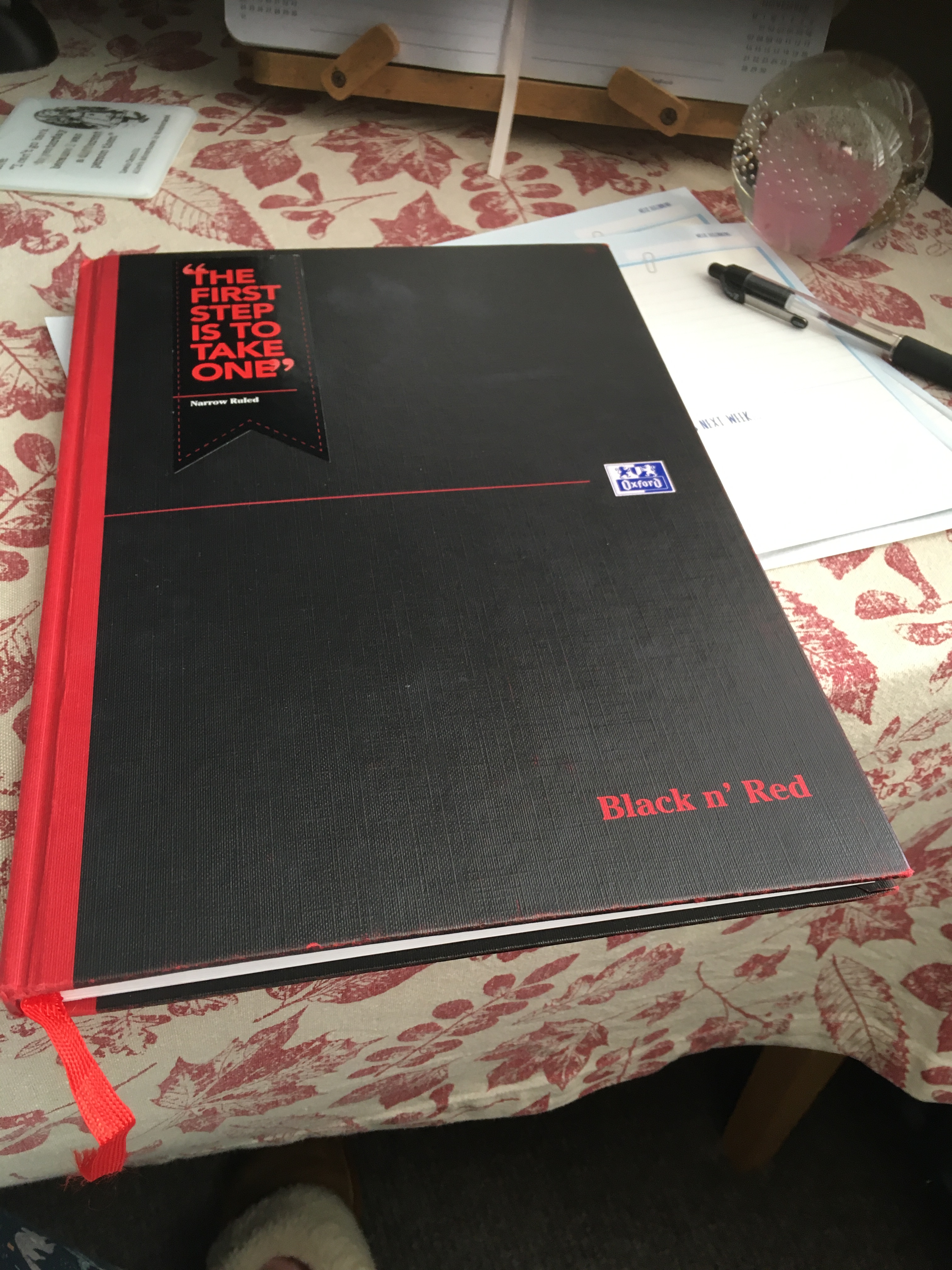 The annual report I have to submit as Dylan’s Court of Protection Deputy is due so I’m reading through my ‘Dylan book’, noting the significant things that have happened in the last 12 months. I’ll need to explain the decisions I have taken on Dylan’s behalf and the issues I anticipate having to respond to in the future. Although the reporting process is a bit onerous, it’s a useful exercise in that it requires an evidence-based review of Dylan’s life.
The annual report I have to submit as Dylan’s Court of Protection Deputy is due so I’m reading through my ‘Dylan book’, noting the significant things that have happened in the last 12 months. I’ll need to explain the decisions I have taken on Dylan’s behalf and the issues I anticipate having to respond to in the future. Although the reporting process is a bit onerous, it’s a useful exercise in that it requires an evidence-based review of Dylan’s life.  The difference between how Dylan is with me at weekends and his behaviours during the week is stark. There are regular reports from Dylan’s residential setting of behaviours which are considered challenging, but I rarely witness these myself. As it’s not appropriate or possible for me to care full time for Dylan, I need to identify the aspects of home life which promote Dylan’s well-being and happiness in order to apply these in his placement setting.
The difference between how Dylan is with me at weekends and his behaviours during the week is stark. There are regular reports from Dylan’s residential setting of behaviours which are considered challenging, but I rarely witness these myself. As it’s not appropriate or possible for me to care full time for Dylan, I need to identify the aspects of home life which promote Dylan’s well-being and happiness in order to apply these in his placement setting.  So, when I returned Dylan to his care home last Easter, I explained how beneficial physical exercise appeared to be to Dylan and asked whether his long afternoon walks could continue. My sense was that walking helped. Could Dylan please do as much as possible, preferably between his preferred hours of 2 and 6pm?
So, when I returned Dylan to his care home last Easter, I explained how beneficial physical exercise appeared to be to Dylan and asked whether his long afternoon walks could continue. My sense was that walking helped. Could Dylan please do as much as possible, preferably between his preferred hours of 2 and 6pm? 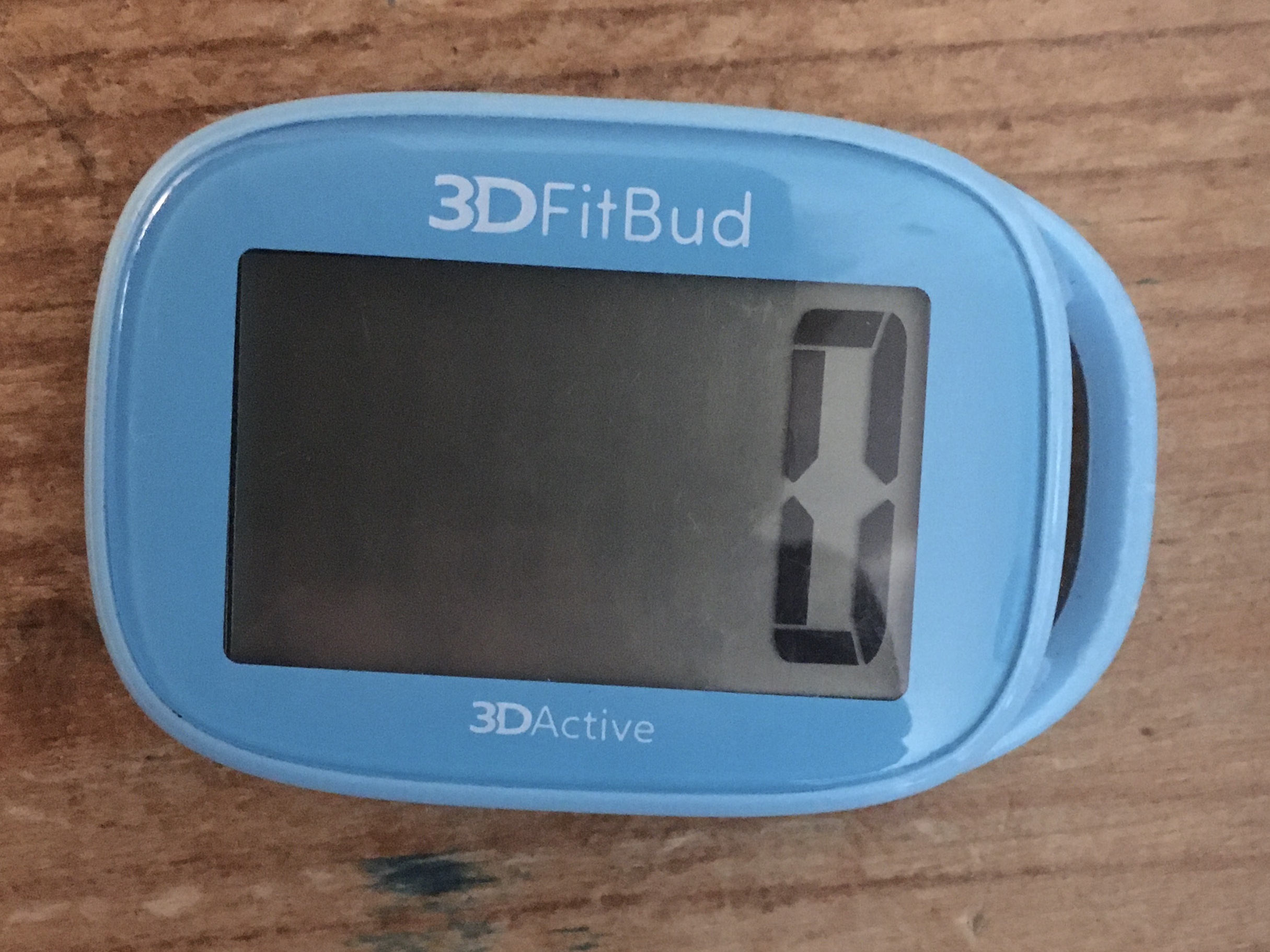 The challenge of advocating for a young man who ‘lacks mental capacity’ and who doesn’t use speech to communicate is understanding what his behaviour signifies and working out how best to respond. Hunches about what might be distressing Dylan may be interesting and sometimes accurate but difficult (or impossible) to confirm with data. While I quite often act instinctively, I much prefer firm (or even soft) ground for my decisions. In this respect, Dylan’s daily care (not just my annual report) is based on evidence. What other way is there to figure out what is in the best interest of someone non-verbal who lacks capacity?
The challenge of advocating for a young man who ‘lacks mental capacity’ and who doesn’t use speech to communicate is understanding what his behaviour signifies and working out how best to respond. Hunches about what might be distressing Dylan may be interesting and sometimes accurate but difficult (or impossible) to confirm with data. While I quite often act instinctively, I much prefer firm (or even soft) ground for my decisions. In this respect, Dylan’s daily care (not just my annual report) is based on evidence. What other way is there to figure out what is in the best interest of someone non-verbal who lacks capacity? As it turns out, the summer numbers I thought untrustworthy were probably not. The data collected subsequently replicates the initial readings, suggesting a clearly differentiated step pattern in the different settings. This may or may not be related to patterns of behaviour in Dylan’s two locations. I haven’t mapped the step data against the incidents of ‘challenging behaviour’ in the care home but that would be the thing to do to fully explore the relationship between walking and well-being for Dylan.
As it turns out, the summer numbers I thought untrustworthy were probably not. The data collected subsequently replicates the initial readings, suggesting a clearly differentiated step pattern in the different settings. This may or may not be related to patterns of behaviour in Dylan’s two locations. I haven’t mapped the step data against the incidents of ‘challenging behaviour’ in the care home but that would be the thing to do to fully explore the relationship between walking and well-being for Dylan.  Dylan and I were on the canal tow path near Bingley on Thursday 8th September when my phone pinged. I had taken Dylan on an overnight visit to see the 3- and 5-Rise locks on the Leeds-Liverpool Canal. Dylan loves water and is fascinated by engineering so I figured the locks might capture his interest (and mine). We had walked to Saltaire that morning and were heading back for a late lunch at the 5-Rise café when my phone interrupted us.
Dylan and I were on the canal tow path near Bingley on Thursday 8th September when my phone pinged. I had taken Dylan on an overnight visit to see the 3- and 5-Rise locks on the Leeds-Liverpool Canal. Dylan loves water and is fascinated by engineering so I figured the locks might capture his interest (and mine). We had walked to Saltaire that morning and were heading back for a late lunch at the 5-Rise café when my phone interrupted us.  Recently – by which I mean in the last half year or so – Dylan has been excited and shouty each time we pass the city of Leeds by road or rail. On the approach to Leeds railway station, Dylan would point and shout what sounded to me like ‘Gar, Gar‘ followed by what I heard as ‘Saur, Saur’. Skirting the city on the M1, Dylan would scan the skyline before declaring: ‘Gar! Saur!‘
Recently – by which I mean in the last half year or so – Dylan has been excited and shouty each time we pass the city of Leeds by road or rail. On the approach to Leeds railway station, Dylan would point and shout what sounded to me like ‘Gar, Gar‘ followed by what I heard as ‘Saur, Saur’. Skirting the city on the M1, Dylan would scan the skyline before declaring: ‘Gar! Saur!‘ Dylan tends to produce only single syllables so will typically cut a word down to a key sound. As far as I was aware ‘Saur’ means dinosaur so I tried that. On one occasion: are there dinosaurs there Dylan? How exciting. Another time: That’s right Dylan, dinosaurs. Except that wasn’t right of course. My attempts to respond positively to Dylan’s attempts to communicate elicited dejection and disappointment.
Dylan tends to produce only single syllables so will typically cut a word down to a key sound. As far as I was aware ‘Saur’ means dinosaur so I tried that. On one occasion: are there dinosaurs there Dylan? How exciting. Another time: That’s right Dylan, dinosaurs. Except that wasn’t right of course. My attempts to respond positively to Dylan’s attempts to communicate elicited dejection and disappointment.  Is there really a dinosaur museum here? I asked Dylan a couple of weeks ago, as we waited at Leeds station on our way back to Sheffield from Durham. Heading north on a train the previous day Dylan had shouted and jabbed with his finger at the skyline, trying desperately to get me to see (and name) what he could see. Oh yes, I had said. I see (although I couldn’t). This hadn’t satisfied Dylan and now he was trying again: Gar, he shouted at me. Then Saur! Saur!
Is there really a dinosaur museum here? I asked Dylan a couple of weeks ago, as we waited at Leeds station on our way back to Sheffield from Durham. Heading north on a train the previous day Dylan had shouted and jabbed with his finger at the skyline, trying desperately to get me to see (and name) what he could see. Oh yes, I had said. I see (although I couldn’t). This hadn’t satisfied Dylan and now he was trying again: Gar, he shouted at me. Then Saur! Saur! I didn’t have long. Dylan was looking uncertain, on the verge of protest. I typed ‘Ten best things to do in Leeds’ into Google. The page was still loading when Dylan (keeping a close eye on proceedings) pointed to one of the first images to appear, shouting excitedly: Gar! Gar! The Royal Armouries! It was the Royal Armouries!
I didn’t have long. Dylan was looking uncertain, on the verge of protest. I typed ‘Ten best things to do in Leeds’ into Google. The page was still loading when Dylan (keeping a close eye on proceedings) pointed to one of the first images to appear, shouting excitedly: Gar! Gar! The Royal Armouries! It was the Royal Armouries! I have never been myself but staff from Dylan’s care home had taken him once or twice in the pre-pandemic past. With his wonderful recall and geographical knowledge, Dylan had remembered those trips and had tried every way he could to communicate that he would like to go there again. He had pointed at the museum when we travelled through Leeds. When I didn’t recognise it he had tried to reproduce the sound he hears when it is named (‘Gar’ sounds like ‘Arm’ in ‘Armouries’). When I still didn’t understand, Dylan had explained what we would find there (swords not dinosaurs).
I have never been myself but staff from Dylan’s care home had taken him once or twice in the pre-pandemic past. With his wonderful recall and geographical knowledge, Dylan had remembered those trips and had tried every way he could to communicate that he would like to go there again. He had pointed at the museum when we travelled through Leeds. When I didn’t recognise it he had tried to reproduce the sound he hears when it is named (‘Gar’ sounds like ‘Arm’ in ‘Armouries’). When I still didn’t understand, Dylan had explained what we would find there (swords not dinosaurs). We had a wonderful day. Dylan quite clearly remembered the museum from his previous visits and led me around confidently. I could see why the building appealed to Dylan (tall with picture windows and a glass elevator) but the exhibits he picked out intrigued me. Dylan liked the ‘Hunting’ zone because there were animals (as long as they weren’t being obviously hurt) and especially enjoyed a display of a man in a punt. I was surprised when Dylan chose to attend a live performance of a monologue by an actor (with sword). Dylan was absorbed by the event, as if listening carefully. I found this humbling. I had, once again, learned something about language from my ‘non-verbal’ son.
We had a wonderful day. Dylan quite clearly remembered the museum from his previous visits and led me around confidently. I could see why the building appealed to Dylan (tall with picture windows and a glass elevator) but the exhibits he picked out intrigued me. Dylan liked the ‘Hunting’ zone because there were animals (as long as they weren’t being obviously hurt) and especially enjoyed a display of a man in a punt. I was surprised when Dylan chose to attend a live performance of a monologue by an actor (with sword). Dylan was absorbed by the event, as if listening carefully. I found this humbling. I had, once again, learned something about language from my ‘non-verbal’ son. In my last post,
In my last post,  I was minded of Dylan’s phone-phobia recently while reading a Jonathan Franzen essay on Sherry Turkle (a ‘technology skeptic who was once a believer’). Children, Turkle writes, ‘can’t get their parents’ attention away from their phones’. The decline in interaction within a family, Turkle suggests, inflicts social, emotional and psychological damage on children, specifically ‘the development of trust and self-esteem’ and ‘the capacity for empathy, friendship and intimacy’. Parents need to ‘step up to their responsibilities as mentors’, Turkle argues, and practice the patient art of conversation with their children rather than demonstrating parental love (as Franzen puts it) ‘by snapping lots of pictures and posting them on Facebook’.
I was minded of Dylan’s phone-phobia recently while reading a Jonathan Franzen essay on Sherry Turkle (a ‘technology skeptic who was once a believer’). Children, Turkle writes, ‘can’t get their parents’ attention away from their phones’. The decline in interaction within a family, Turkle suggests, inflicts social, emotional and psychological damage on children, specifically ‘the development of trust and self-esteem’ and ‘the capacity for empathy, friendship and intimacy’. Parents need to ‘step up to their responsibilities as mentors’, Turkle argues, and practice the patient art of conversation with their children rather than demonstrating parental love (as Franzen puts it) ‘by snapping lots of pictures and posting them on Facebook’. Dylan has been using an iPad for years, primarily to access CDs and films he has purchased and downloaded and which he can watch offline. Previously, Dylan had portable DVD and CD players for this purpose but the iPad proved a better option practically and for promoting independence. Although initially intended for use during journeys and holidays, Dylan became increasingly attached to his iPad and built it into his daily routine, often preferring it to his TV or over other activities.
Dylan has been using an iPad for years, primarily to access CDs and films he has purchased and downloaded and which he can watch offline. Previously, Dylan had portable DVD and CD players for this purpose but the iPad proved a better option practically and for promoting independence. Although initially intended for use during journeys and holidays, Dylan became increasingly attached to his iPad and built it into his daily routine, often preferring it to his TV or over other activities. It is very hard to remove something from an adult, even when they lack the capacity to make decisions and need someone to act in their best interests. Dylan had been using an iPad for years and it had a key role in his life. I was aware that in removing it I could create more problems than I solved. The iPad, however, was itself the source of some of the difficulties which Dylan was encountering.
It is very hard to remove something from an adult, even when they lack the capacity to make decisions and need someone to act in their best interests. Dylan had been using an iPad for years and it had a key role in his life. I was aware that in removing it I could create more problems than I solved. The iPad, however, was itself the source of some of the difficulties which Dylan was encountering. What the recent problem with the iPad has demonstrated is that, given the built-in obstacles in the technology, Dylan requires support to use it. Dylan generally recognises when he needs support with something language-based and will request this. However, the personal usage data suggests that Dylan had been spending significant amounts of time on his iPad. The reality is that if staff are not available (or able) to support Dylan with the technology, rather than a resource it becomes a source of frustration and anger, leading both the technology and Dylan to breakdown.
What the recent problem with the iPad has demonstrated is that, given the built-in obstacles in the technology, Dylan requires support to use it. Dylan generally recognises when he needs support with something language-based and will request this. However, the personal usage data suggests that Dylan had been spending significant amounts of time on his iPad. The reality is that if staff are not available (or able) to support Dylan with the technology, rather than a resource it becomes a source of frustration and anger, leading both the technology and Dylan to breakdown. 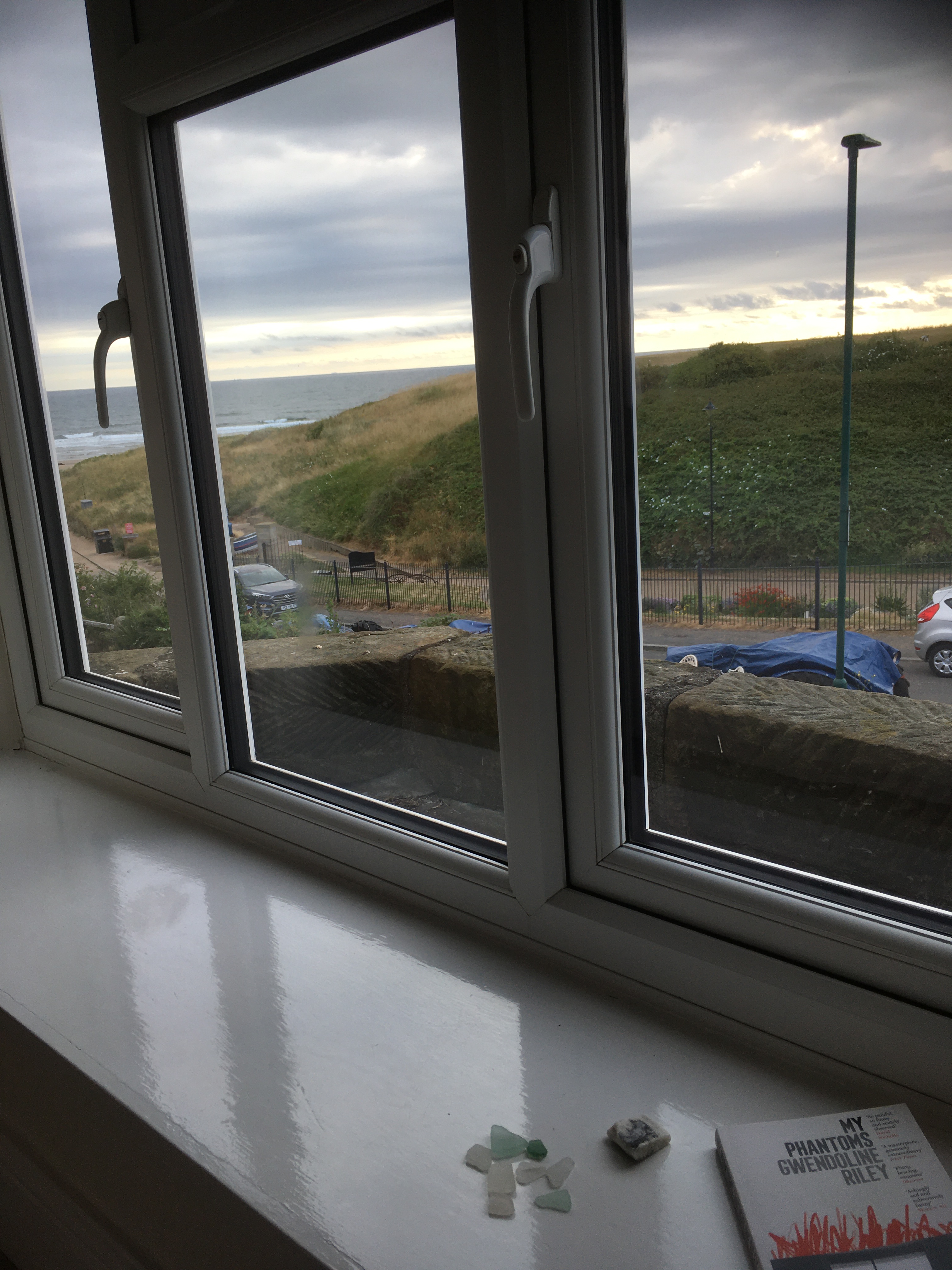 At the time of writing (11 weeks after I confiscated the iPad) there is some evidence to suggest that the iPad had become a source of distress for Dylan rather than a support; certainly there has been a reduction in the total number of incidents when Dylan has become upset at the care home. I’ve been most struck, however, by the ease with which Dylan has accepted the change. Just as I quickly got used to life without my camera phone, so Dylan has adapted to life without his iPad. He asked about it a few times in the early days but hasn’t mentioned it (at least to me) for weeks.
At the time of writing (11 weeks after I confiscated the iPad) there is some evidence to suggest that the iPad had become a source of distress for Dylan rather than a support; certainly there has been a reduction in the total number of incidents when Dylan has become upset at the care home. I’ve been most struck, however, by the ease with which Dylan has accepted the change. Just as I quickly got used to life without my camera phone, so Dylan has adapted to life without his iPad. He asked about it a few times in the early days but hasn’t mentioned it (at least to me) for weeks.  It didn’t take long, following Dylan’s autism diagnosis, for me to realise that visual images – photographs, symbols, videos – would play a central role in his life. One of my earliest memories of that time is of walking around the village where we lived, photographing places we visited to add to the communication book I was making. It was 1996 and Dylan had just turned two. Digital photography and mobile phones had not yet landed. I shot rolls and rolls of film in those early years and (with an industrial camera which made my shoulder ache) produced numerous home videos – not to record, celebrate or share our lives, as is the case today, but as teaching resources for Dylan’s home education programme and communication aids to support our family life.
It didn’t take long, following Dylan’s autism diagnosis, for me to realise that visual images – photographs, symbols, videos – would play a central role in his life. One of my earliest memories of that time is of walking around the village where we lived, photographing places we visited to add to the communication book I was making. It was 1996 and Dylan had just turned two. Digital photography and mobile phones had not yet landed. I shot rolls and rolls of film in those early years and (with an industrial camera which made my shoulder ache) produced numerous home videos – not to record, celebrate or share our lives, as is the case today, but as teaching resources for Dylan’s home education programme and communication aids to support our family life. Such visual supports are helpful for any child who receives an autism diagnosis but for Dylan, who has remained non-verbal, they are essential. The visual world is Dylan’s language, his ‘mother tongue’. At 28 years old, Dylan has a vast visual vocabulary, supported by thousands of photographs taken over the course of his life. Dylan processes, organises and records visual information at astonishing speed. He can scan an environment and log it visually within minutes. When Dylan is given his visual programme for the day, his eyes flick quickly through the images, absorbing the information. If he encounters an unfamiliar symbol or photograph, he scrutinises it intently, looking for clues, before asking for more information or (sometimes) becoming anxious about what he doesn’t understand.
Such visual supports are helpful for any child who receives an autism diagnosis but for Dylan, who has remained non-verbal, they are essential. The visual world is Dylan’s language, his ‘mother tongue’. At 28 years old, Dylan has a vast visual vocabulary, supported by thousands of photographs taken over the course of his life. Dylan processes, organises and records visual information at astonishing speed. He can scan an environment and log it visually within minutes. When Dylan is given his visual programme for the day, his eyes flick quickly through the images, absorbing the information. If he encounters an unfamiliar symbol or photograph, he scrutinises it intently, looking for clues, before asking for more information or (sometimes) becoming anxious about what he doesn’t understand. The photos developed from hundreds of rolls of analogue film have, of course, been superseded by digital images stored on various devices: computers, lap tops, iPads, iPhone and USB sticks. These technological developments may not have been made with disabled people in mind but they have helped to meet Dylan’s needs as a non-verbal autistic man with an intellectual disability. In particular, phone-based photography has given Dylan access to a portable archive which he uses for a range of purposes. Dylan browses the photos on my phone to communicate, for personal pleasure and for reassurance. Sometimes, multiple functions are served at once; while having a drink in a pub, for example, Dylan will scroll through the images on my phone while I read, the pleasure and reassurance he finds in this activity punctuated by conversations about selected images.
The photos developed from hundreds of rolls of analogue film have, of course, been superseded by digital images stored on various devices: computers, lap tops, iPads, iPhone and USB sticks. These technological developments may not have been made with disabled people in mind but they have helped to meet Dylan’s needs as a non-verbal autistic man with an intellectual disability. In particular, phone-based photography has given Dylan access to a portable archive which he uses for a range of purposes. Dylan browses the photos on my phone to communicate, for personal pleasure and for reassurance. Sometimes, multiple functions are served at once; while having a drink in a pub, for example, Dylan will scroll through the images on my phone while I read, the pleasure and reassurance he finds in this activity punctuated by conversations about selected images.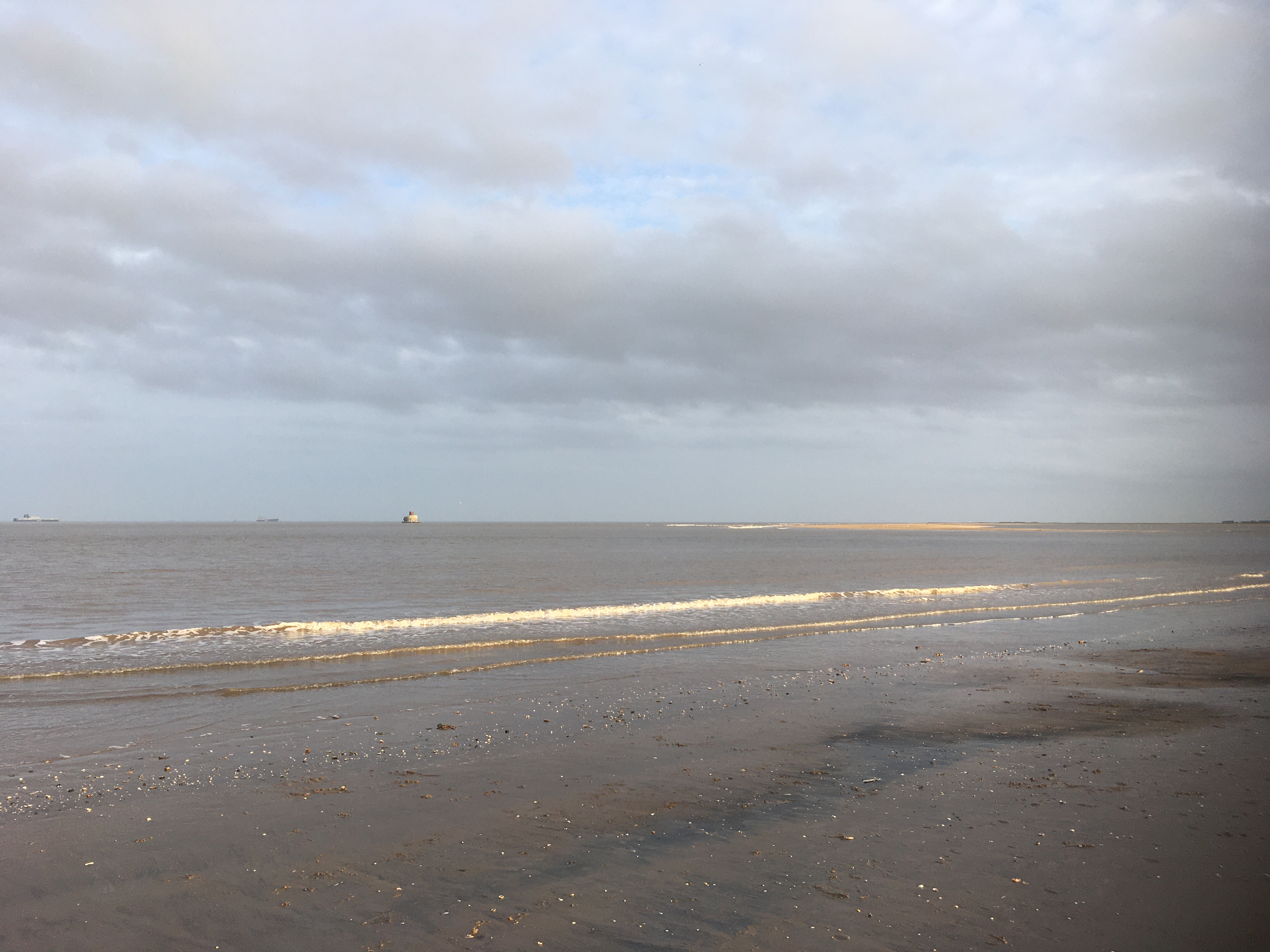 My mobile phone is packed with photos, the vast majority involving Dylan in some way. They are records of places we have visited, mostly landscape but sometimes featuring one or both of us (sometimes ‘selfies’ but more often not) generally taken by me but a few by Dylan, my daughter or friends. The gallery is added to on a weekly basis, when Dylan comes for home visits, and more often during holidays and trips. But here’s a thing. The most recent photo of Dylan on my phone is a selfie of us at Cleethorpes, taken on New Year’s Day. Dylan has made numerous home visits, since then, and we have been on overnight trips and spent a week in Wales. But, except for one landscape shot taken in Wales on 21st April, there is no record on my phone of these visits.
My mobile phone is packed with photos, the vast majority involving Dylan in some way. They are records of places we have visited, mostly landscape but sometimes featuring one or both of us (sometimes ‘selfies’ but more often not) generally taken by me but a few by Dylan, my daughter or friends. The gallery is added to on a weekly basis, when Dylan comes for home visits, and more often during holidays and trips. But here’s a thing. The most recent photo of Dylan on my phone is a selfie of us at Cleethorpes, taken on New Year’s Day. Dylan has made numerous home visits, since then, and we have been on overnight trips and spent a week in Wales. But, except for one landscape shot taken in Wales on 21st April, there is no record on my phone of these visits.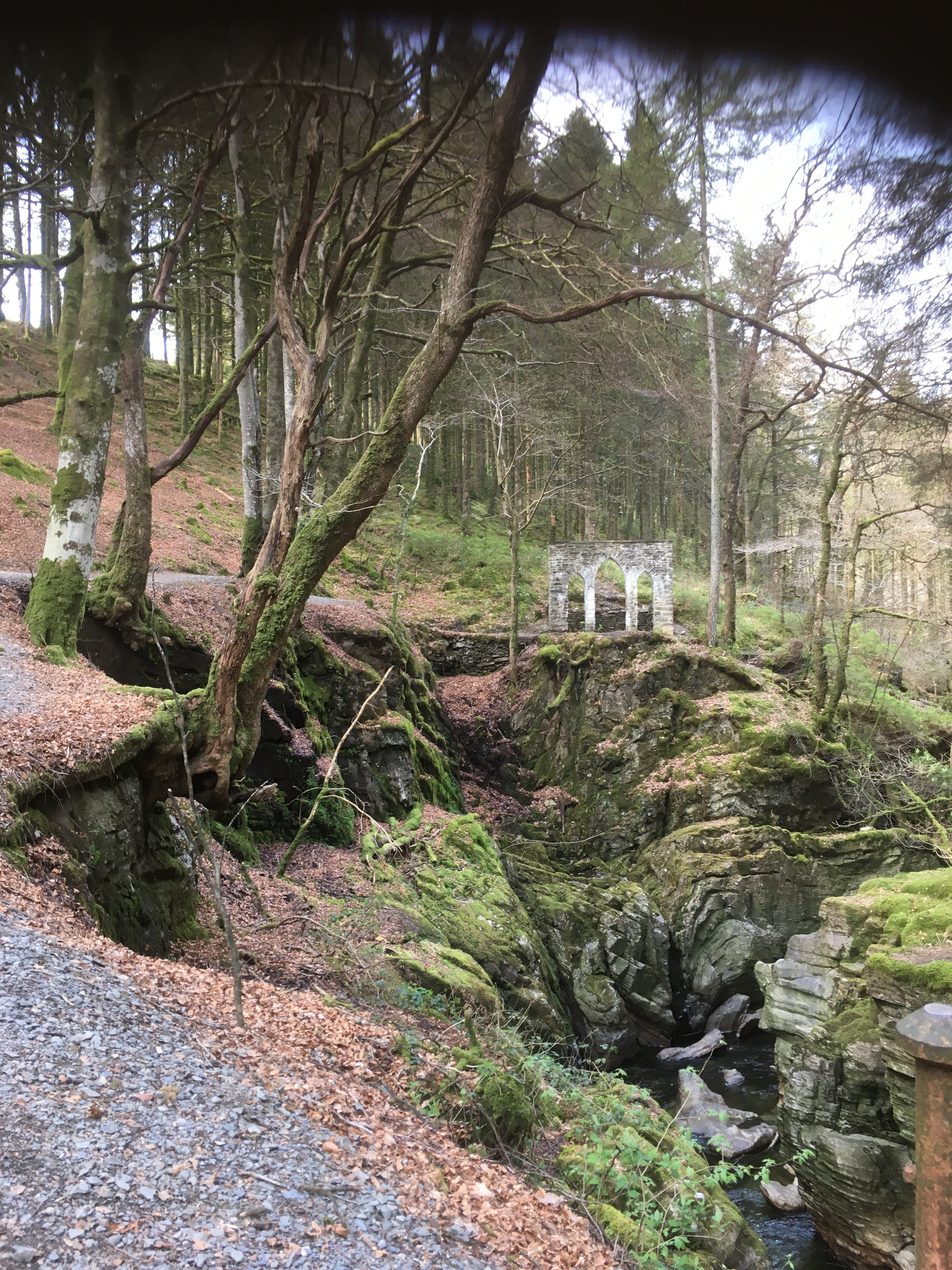 The photo in Wales (on the left) was taken to see if Dylan would allow me to use my camera phone after months of him objecting. How many months? At least five, maybe more. I can’t pinpoint exactly when it started. I wish I could because then I might be able to work out why. Looking back at the photos of Dylan on my phone immediately before New Year’s Day, he seems to be smiling and happy. There are fewer than in previous years, perhaps. Now, as I search my online records, I see that on 26th December I reflected to friends that Dylan seemed to ‘have become camera shy’ and reported that I’d shaved him in case he disliked his full beard. So, Dylan was already feeling uncomfortable about phone photographs in December?
The photo in Wales (on the left) was taken to see if Dylan would allow me to use my camera phone after months of him objecting. How many months? At least five, maybe more. I can’t pinpoint exactly when it started. I wish I could because then I might be able to work out why. Looking back at the photos of Dylan on my phone immediately before New Year’s Day, he seems to be smiling and happy. There are fewer than in previous years, perhaps. Now, as I search my online records, I see that on 26th December I reflected to friends that Dylan seemed to ‘have become camera shy’ and reported that I’d shaved him in case he disliked his full beard. So, Dylan was already feeling uncomfortable about phone photographs in December?  And now I think about it, perhaps that could explain the day I had to report an ‘incident’ during a home visit (such a rare occurrence that the care home manager commented to me that she was surprised to see the report). Dylan and I were completing a familiar and much-loved walk when he became distressed and started jumping wildly (one of Dylan’s anxiety behaviours) at the edge of a steep path. It was a difficult situation for me to manage and I was badly shaken, especially as I didn’t know what had triggered it. But now I remember that I had taken my phone out to photograph the valley. According to my diary that was 17th October. Could Dylan really have been anxious about photos as long ago as that? How much discomfort might I have put him through before he managed to communicate this to me?
And now I think about it, perhaps that could explain the day I had to report an ‘incident’ during a home visit (such a rare occurrence that the care home manager commented to me that she was surprised to see the report). Dylan and I were completing a familiar and much-loved walk when he became distressed and started jumping wildly (one of Dylan’s anxiety behaviours) at the edge of a steep path. It was a difficult situation for me to manage and I was badly shaken, especially as I didn’t know what had triggered it. But now I remember that I had taken my phone out to photograph the valley. According to my diary that was 17th October. Could Dylan really have been anxious about photos as long ago as that? How much discomfort might I have put him through before he managed to communicate this to me?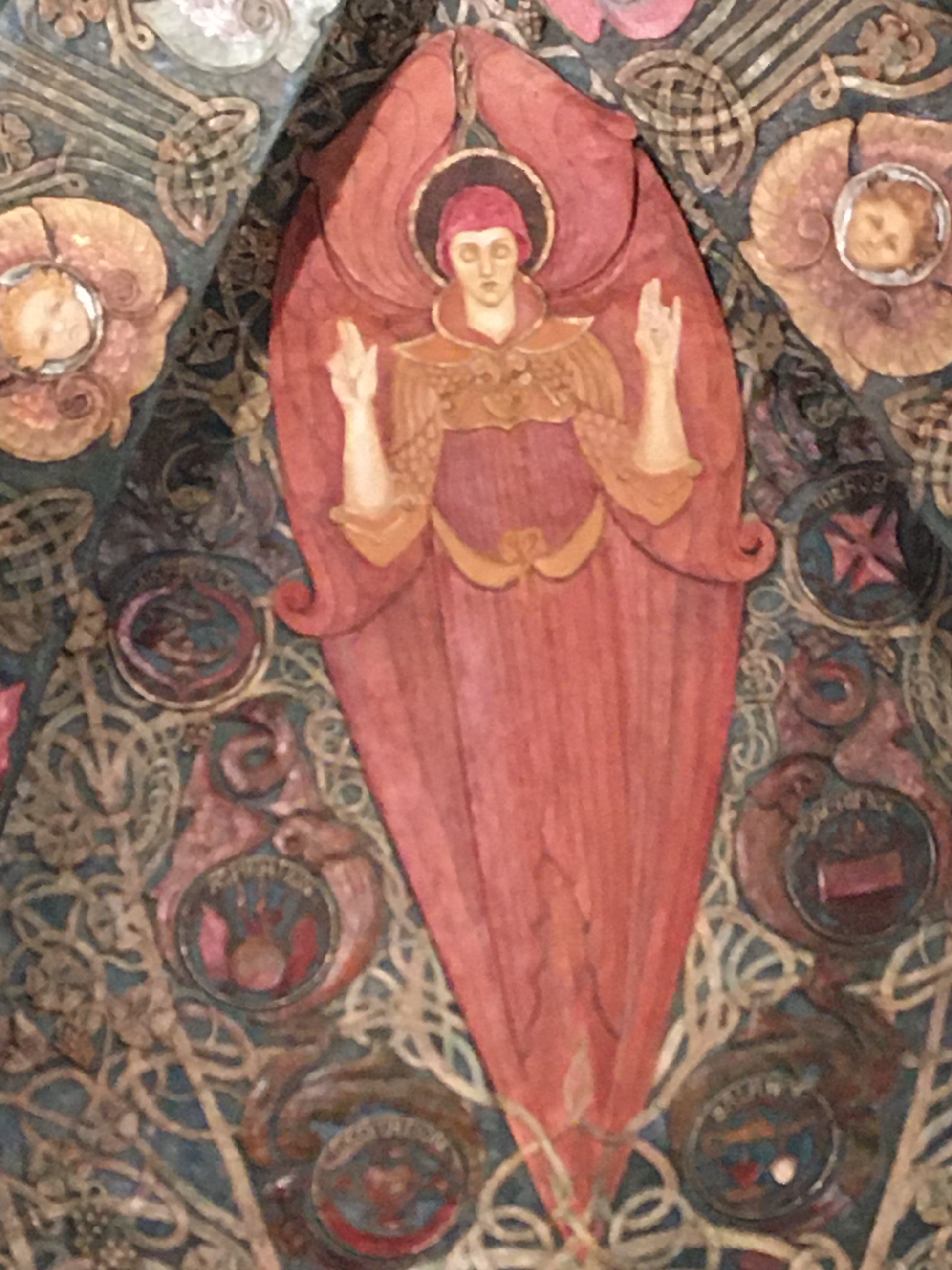 Now, because I’m alert to Dylan’s discomfort, he only has to say ‘no, no’ and wave his hand. I thought that I had always asked Dylan for his consent before taking his picture, but I realise now that I probably did this in the same way that I ask my dad or daughter for permission to photograph them. Dylan needs to be given more opportunity to communicate consent or refusal than a neurotypical person because he doesn’t have access to the usual strategies, such as spoken language. Obviously, since Dylan has refused to be photographed I’ve stopped sharing pictures online and I’ve been giving some thought to archival material (such as on this blog) and reflecting on ethical and other implications. However, I’m not convinced that whatever is underlying this is quite as straightforward for Dylan…
Now, because I’m alert to Dylan’s discomfort, he only has to say ‘no, no’ and wave his hand. I thought that I had always asked Dylan for his consent before taking his picture, but I realise now that I probably did this in the same way that I ask my dad or daughter for permission to photograph them. Dylan needs to be given more opportunity to communicate consent or refusal than a neurotypical person because he doesn’t have access to the usual strategies, such as spoken language. Obviously, since Dylan has refused to be photographed I’ve stopped sharing pictures online and I’ve been giving some thought to archival material (such as on this blog) and reflecting on ethical and other implications. However, I’m not convinced that whatever is underlying this is quite as straightforward for Dylan…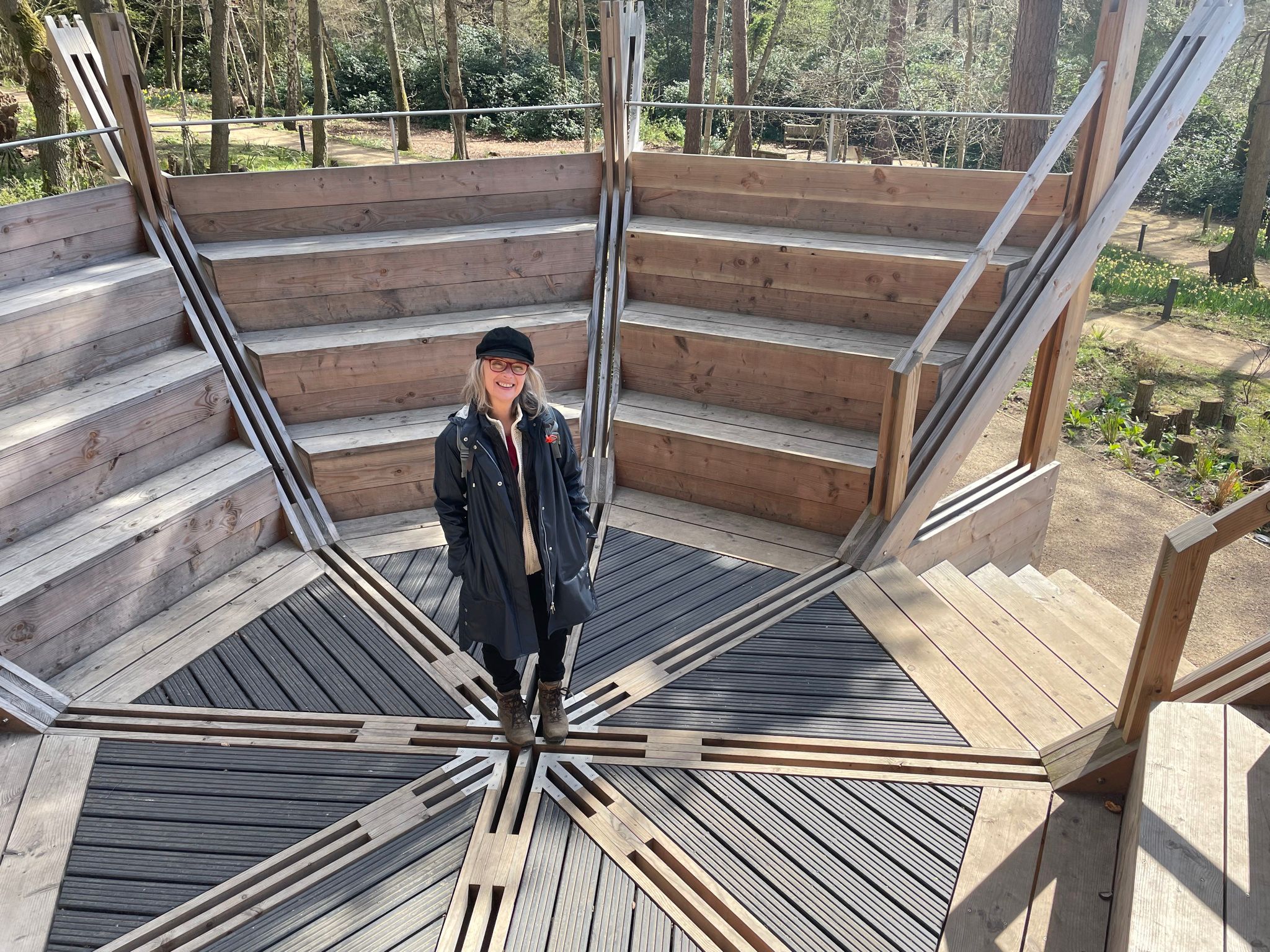 Dylan’s current objection to photography goes beyond my taking his picture; he objects to my taking any photographs at all. There are only 16 shots In my mobile phone gallery since I photographed the two of us on New Year’s Day. With the exception of the photo in Wales, they were all taken when Dylan wasn’t with me. Even if I reassure Dylan that I am not going to take a picture of him, he still says ‘no, no’ and waves his hands if I get my phone out. Sometimes he tries to grab the phone from me and once or twice he has become distressed enough for this to threaten to lead to the jumping which signals anxiety.
Dylan’s current objection to photography goes beyond my taking his picture; he objects to my taking any photographs at all. There are only 16 shots In my mobile phone gallery since I photographed the two of us on New Year’s Day. With the exception of the photo in Wales, they were all taken when Dylan wasn’t with me. Even if I reassure Dylan that I am not going to take a picture of him, he still says ‘no, no’ and waves his hands if I get my phone out. Sometimes he tries to grab the phone from me and once or twice he has become distressed enough for this to threaten to lead to the jumping which signals anxiety. 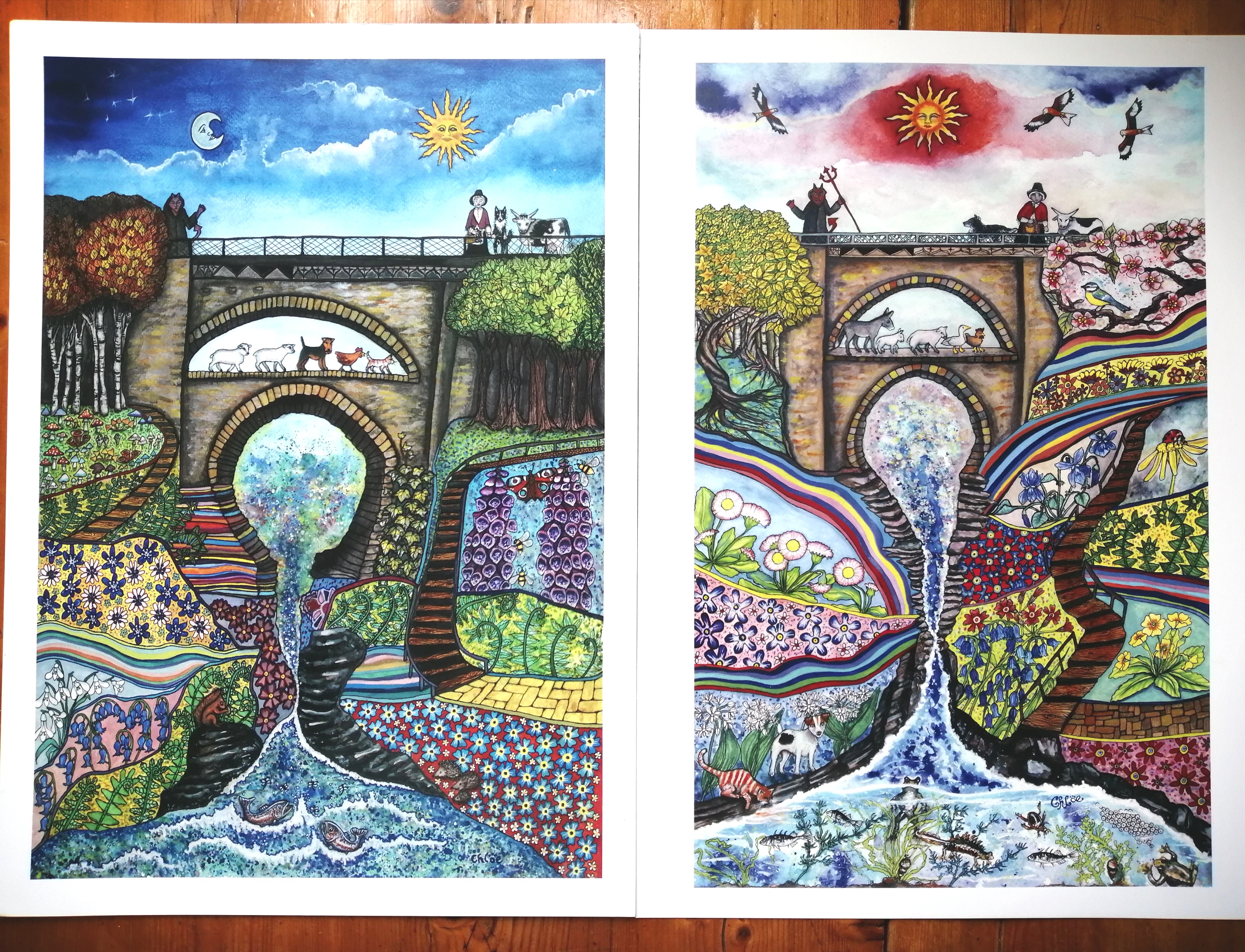 Obviously, this is a risk I have not been prepared to take for the sake of a photo of, for example, Devil’s Bridge at Pontarfynach. Our visit there at Easter was the highlight of Dylan’s holiday. Dylan was utterly transfixed by the chaos of water and stone and he lingered at the Punchbowl and viewing platforms on Jacob’s Ladder as long as I would let him. Previously, Dylan would have wanted me to photograph this magical place so that he could return to images of it whenever he wanted. ‘Do you want me to take a photograph of the water for you, Dylan?’ ‘No, no, no’. Of course, I could not risk Dylan jumping into the Mynach Falls. Serendipitously, on this occasion, a print of Devil’s Bridge was hanging in our holiday cottage and every evening Dylan would stand before it, entranced. Since we returned from our holiday I have bought a copy of the print (Clever Girl) and a sister piece (Spring) by the same artist, Chloe Rodenhurst, so that Dylan can continue to enjoy the visual world that speaks so eloquently to him (if no longer via photographs).
Obviously, this is a risk I have not been prepared to take for the sake of a photo of, for example, Devil’s Bridge at Pontarfynach. Our visit there at Easter was the highlight of Dylan’s holiday. Dylan was utterly transfixed by the chaos of water and stone and he lingered at the Punchbowl and viewing platforms on Jacob’s Ladder as long as I would let him. Previously, Dylan would have wanted me to photograph this magical place so that he could return to images of it whenever he wanted. ‘Do you want me to take a photograph of the water for you, Dylan?’ ‘No, no, no’. Of course, I could not risk Dylan jumping into the Mynach Falls. Serendipitously, on this occasion, a print of Devil’s Bridge was hanging in our holiday cottage and every evening Dylan would stand before it, entranced. Since we returned from our holiday I have bought a copy of the print (Clever Girl) and a sister piece (Spring) by the same artist, Chloe Rodenhurst, so that Dylan can continue to enjoy the visual world that speaks so eloquently to him (if no longer via photographs). I might not have risked photographing the Mynach Falls but I did conduct an experiment that week. One of the theories I’ve developed is that Dylan dislikes me using my phone rather than the phone camera. Could he be trying to sabotage my conversations with his sister? Maybe he doesn’t like the effect of speaker phone on language. Or perhaps Dylan resents any time I spend on my phone (checking for news and email) and wants my attention to himself. Quite right too. Or (a wilder hypothesis) could he have developed anxiety about my phone as a result of a specific incident? Dylan may, for example, have made a connection between my mobile phone and a Lateral Flow Test he had to take for Disney on Ice (due to a problem with the notification). That was in December which might fit with the Christmas/New Year dates (but wouldn’t explain the October incident I’ve recalled while writing this blog). To test whether Dylan’s protest is about my phone or my photography, I took my old digital camera on our trip to Wales.
I might not have risked photographing the Mynach Falls but I did conduct an experiment that week. One of the theories I’ve developed is that Dylan dislikes me using my phone rather than the phone camera. Could he be trying to sabotage my conversations with his sister? Maybe he doesn’t like the effect of speaker phone on language. Or perhaps Dylan resents any time I spend on my phone (checking for news and email) and wants my attention to himself. Quite right too. Or (a wilder hypothesis) could he have developed anxiety about my phone as a result of a specific incident? Dylan may, for example, have made a connection between my mobile phone and a Lateral Flow Test he had to take for Disney on Ice (due to a problem with the notification). That was in December which might fit with the Christmas/New Year dates (but wouldn’t explain the October incident I’ve recalled while writing this blog). To test whether Dylan’s protest is about my phone or my photography, I took my old digital camera on our trip to Wales. I was able to take 14 photographs that week, including one of Dylan under the Jubilee Arch at Hafod (which I won’t share). I would say that Dylan wasn’t super relaxed but he gave consent and seemed happy enough. It was for this reason I attempted to take a photo with my mobile phone on 21st April. Having used my Fujifilm all week, how would Dylan react to the iPhone? I took the shot but Dylan wasn’t at all happy about it and, given the terrain, I put my phone away. What do I surmise from this? It may be the phone, rather than the phone camera, which makes Dylan anxious, but I need more evidence. If it is the phone, then I have a not-insignificant problem. I need to be able to use my mobile in emergencies and for navigation. I should be able to take calls from friends and family if they need me. I have to be able to use digital apps (railcards for example) when we are in the community. And, importantly, I need to be able to record medical and other incidents for Dylan’s records.
I was able to take 14 photographs that week, including one of Dylan under the Jubilee Arch at Hafod (which I won’t share). I would say that Dylan wasn’t super relaxed but he gave consent and seemed happy enough. It was for this reason I attempted to take a photo with my mobile phone on 21st April. Having used my Fujifilm all week, how would Dylan react to the iPhone? I took the shot but Dylan wasn’t at all happy about it and, given the terrain, I put my phone away. What do I surmise from this? It may be the phone, rather than the phone camera, which makes Dylan anxious, but I need more evidence. If it is the phone, then I have a not-insignificant problem. I need to be able to use my mobile in emergencies and for navigation. I should be able to take calls from friends and family if they need me. I have to be able to use digital apps (railcards for example) when we are in the community. And, importantly, I need to be able to record medical and other incidents for Dylan’s records. 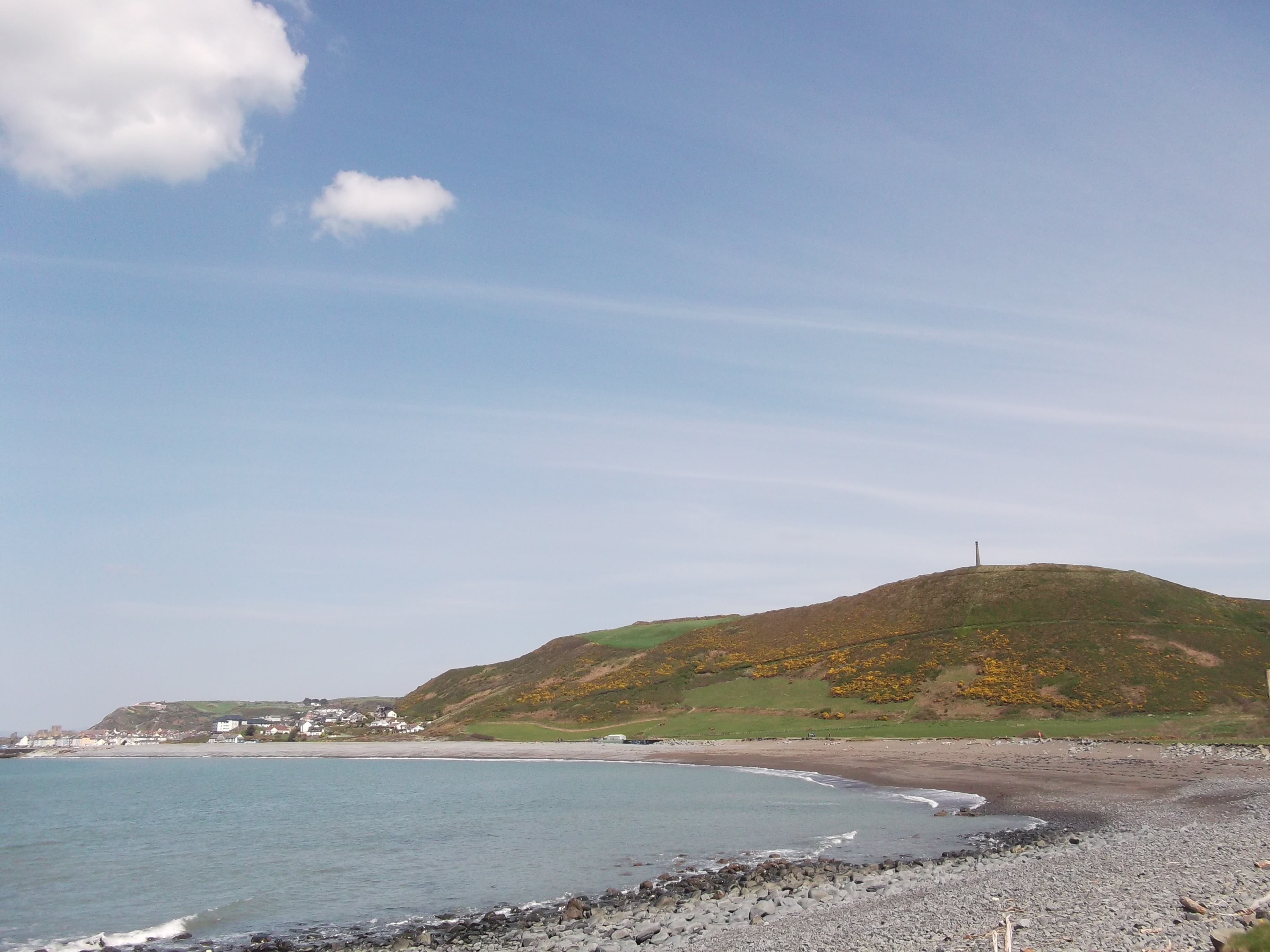 Recently, for example, Dylan sustained a cut on the head which I asked him if I could photograph with my phone. Dylan refused and the cut had to be photographed without Dylan’s consent by the care home. While not ideal, there will be other incidents and injuries, particularly given Dylan’s epilepsy, which need to be recorded in this way. I’m told that care home staff photograph Dylan using a variety of devices, including iPhones, but I don’t know whether this is with Dylan’s consent or if he has ever protested about it. Is it only my phone that Dylan objects to? I need more information. Meantime, I am trying to stay alert and open enough to hear what it is Dylan is trying to communicate and work out why. I’d be glad to hear from anyone who has experienced anything similar or has new ideas and fresh eyes.
Recently, for example, Dylan sustained a cut on the head which I asked him if I could photograph with my phone. Dylan refused and the cut had to be photographed without Dylan’s consent by the care home. While not ideal, there will be other incidents and injuries, particularly given Dylan’s epilepsy, which need to be recorded in this way. I’m told that care home staff photograph Dylan using a variety of devices, including iPhones, but I don’t know whether this is with Dylan’s consent or if he has ever protested about it. Is it only my phone that Dylan objects to? I need more information. Meantime, I am trying to stay alert and open enough to hear what it is Dylan is trying to communicate and work out why. I’d be glad to hear from anyone who has experienced anything similar or has new ideas and fresh eyes.